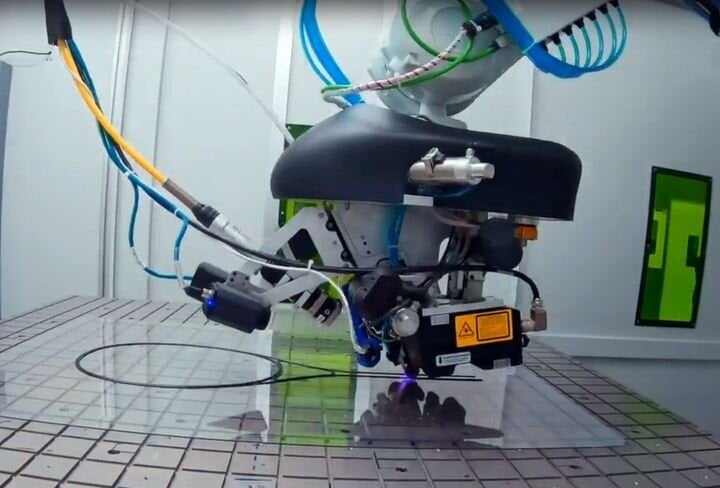![Advanced 3D printed bike [Source: AREVO]](https://fabbaloo.com/wp-content/uploads/2020/05/image-asset_img_5eb0505d1450a.jpg)
I’m looking at a company that seems to be leveraging all the latest 3D technologies: AREVO.
The company is based in California and provides advanced manufacturing services. They offer manufacturing-as-a-service (MaaS) where clients can request and receive parts on demand.
Their claim to fame, however, is in the “advanced” category. They seem to be leveraging multiple advanced technologies to enable production of radically new products. Their video shows some of what they can do:
There’s several interesting things in the video that I noticed.
AREVO Generative Design
First, it seems they are using generative design technologies to create optimized 3D models for production. This will lower the part weight considerably, without compromising on designed strengths. That’s important for several types of applications, including bicycling, of which they show many examples.
Another technology they’re making heavy use of is 3D printing. They have developed a robotic 3D printer that is apparently named the “AREVO AQUA/01”. It’s clearly an industrial piece that is said to be designed for high throughput.
Deposition is done by robotic motion, which allows for some interesting slicing scenarios. It seems, however, they do not have a moving build plate; the build surface appears motionless. This suggests the AQUA/01 cannot take advantage of support-less 3D printing as is done by some other robotic 3D printing systems and 5-axis 3D printing systems.
AREVO Composite Materials
AREVO makes substantial use of composite materials, which are incredibly strong, yet very lightweight. Carbon fiber is the most common composite used in 3D printing, and it seems that AREVO is making use of it.
Carbon fiber is used in two ways in 3D printing these days: first, it can be chopped into fine segments and mixed in with polymer resin to produce “Nylon CF” or similar materials. These are far harder than just the polymer, but not as strong as continuous carbon fiber.
Continuous carbon fiber 3D printing is done by essentially dropping a thread of carbon fiber as the toolhead moves during 3D printing. This is done by at least two companies, Markforged and Anisoprint. 3D printers from these companies can produce incredibly strong parts through the use of these continuous carbon fiber strands.
Which method does AREVO use? It’s hard to say, as they don’t specify. However, there are some clues.
![AQUA/01 Robotic 3D printing system apparently showing spool of carbon fiber [Source: AREVO]](https://fabbaloo.com/wp-content/uploads/2020/05/image-asset_img_5eb0505d348b1.jpg)
In this image of the AQUA/01 there clearly is a large spool that seems to match the continuous carbon fiber spool shown earlier in their video. This suggests their parts are in fact made from continuous carbon fiber.
![Robotic 3D printing toolhead [Source: AREVO]](https://fabbaloo.com/wp-content/uploads/2020/05/image-asset_img_5eb0505d57fbc.jpg)
Another interesting observation is that the rather complex robotic toolhead seems to include a camera. This suggests they are doing some form of advanced, possibly even real time, quality control.
Finally, I am unsure of the purpose for all the various input plumbing to this toolhead. It may be they are able to provide multiple types of fibers for 3D printing within the same print job, for example.
One thing I am wondering about is the throughput of the system. 3D printing in any form these days is vastly slower than producing objects using mass manufacturing, and I don’t see AREVO’s system able to catch up. However, it is probably more than adequate for low-volume manufacturing of specialty products and parts.
AREVO Package
Let’s look at what AREVO has done. They’ve combined several advanced technologies together to provide a MaaS option for manufacturing clients. The combination of composite materials, generative design and robotic 3D printing should offer very powerful capacities to their clients.
AREVO says they are a “revolution in manufacturing”, and they may be correct. AREVO has arrived.
Via AREVO

